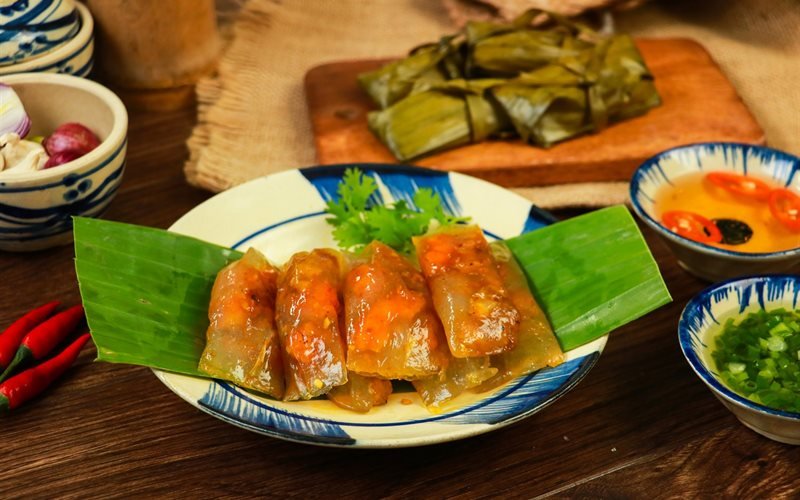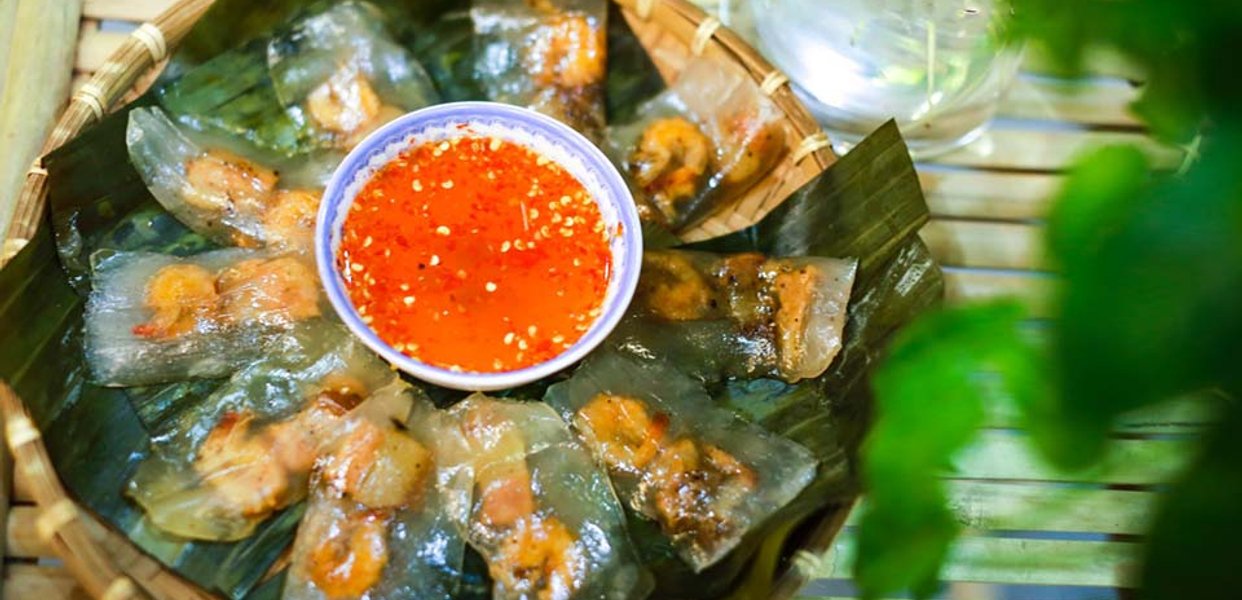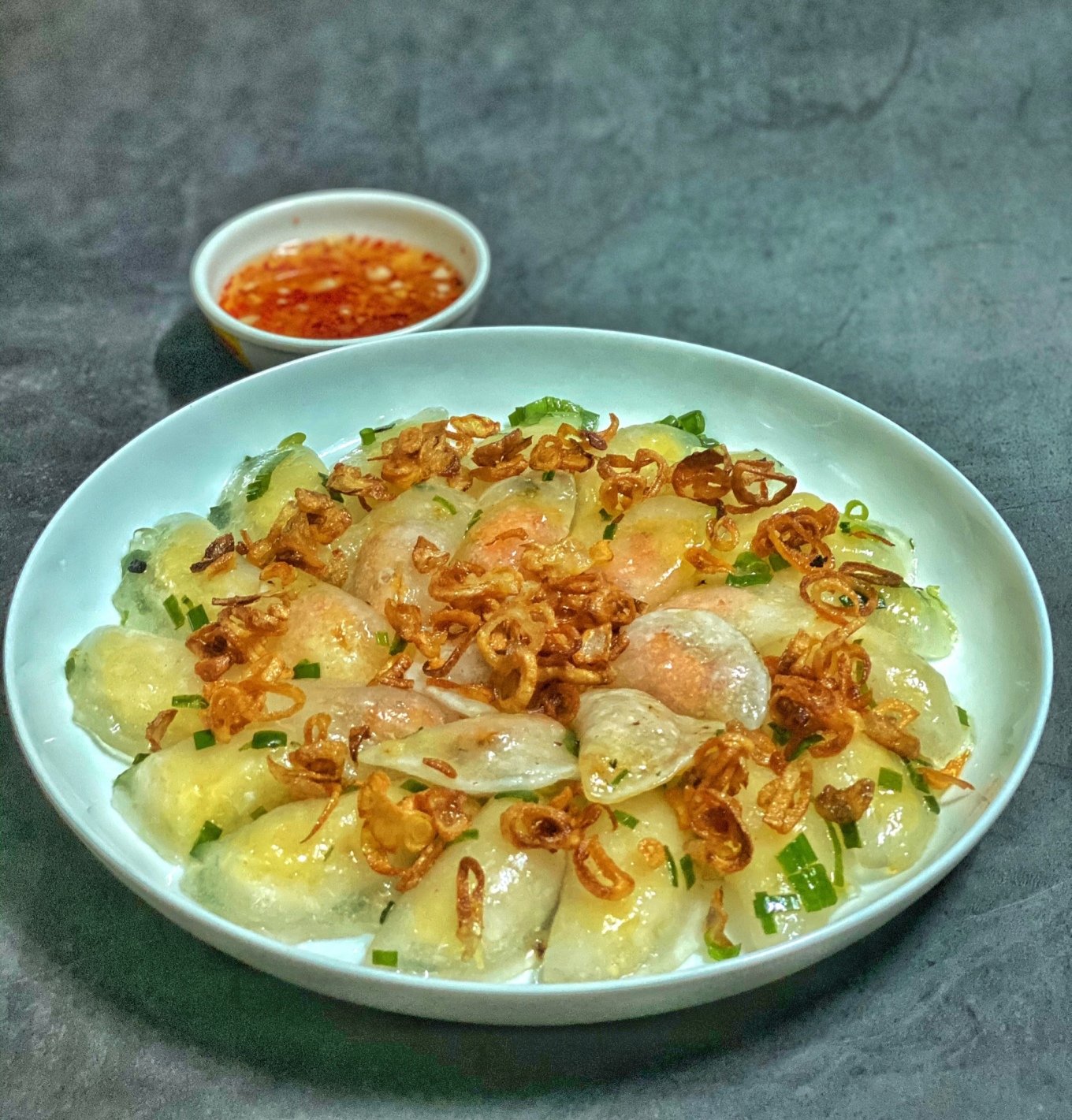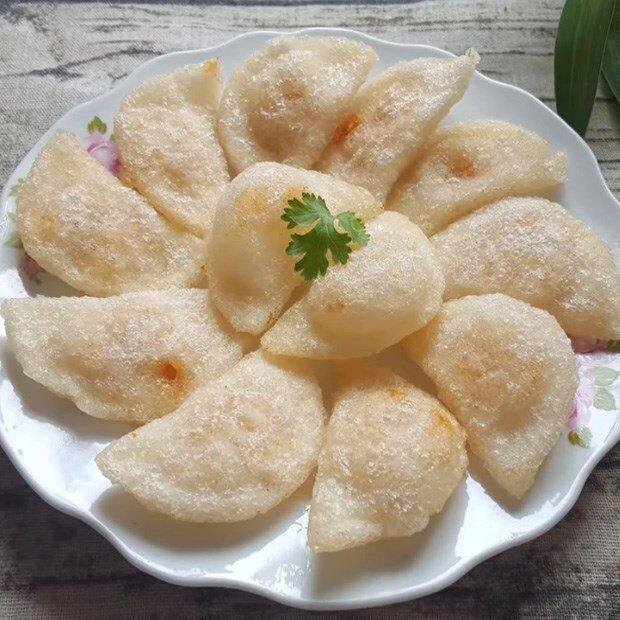DONG HOI TRAVEL GUIDE
Dong Hoi is a charming and less crowded harbor town on the coast. It's a peaceful getaway with beautiful views of the Nhat Le River. The town has pristine sandy beaches on its both north and south sides, inviting visitors to relax and enjoy the untouched coastal scenery. Whether you're walking along the river, swimming in the clear water, or just enjoying the sea breeze, Dong Hoi offers an authentic and unspoiled Vietnamese experience.
1. What to see
If you travel to Dong Hoi, Nhat Le is a must-see beach – quiet sun-drenched seaside, pure white sand and sparkling crystal blue water. Nhat Le beach is a dream place for those who love playing with waves, being cuddled by gentle currents or simply feeling the smooth sand under your bare feet.
“Nhat” means Sun while “Le” means teardrops; “Nhat Le” means the tears of the Sun. The name came from a historic event in early 17th century. Back in those dates, Vietnam was under the leadership of The Trinh Kingdom (The North - Outer Realm) and the Nguyen Kingdom (The South - Inner Realm) at the same time. Because of the unresolvable conflicts between two regimes, Gianh River was used as a border separating two parts of the country. The immigrants in the south nostalgically looked towards their homeland in the North. Their tears dropped, mingled with the river and flowed into the beach. Since then, the beach has been called Nhat Le.
Unlike many other beaches in Vietnam, Nhat Le beach still remains its pristine charm. Taking a walk along the charming river or simply lying down on the sand floor and letting the fresh breezes caress you are something you can expect when visiting the beach.
The best time to enjoy the beach is the early morning when it is amazingly peaceful. The whole world is for you. Spend this time to do some meditation with the sunrise and feel grateful to our Mother Nature.
If the early morning is the time for your own, evening is the time for socialization. Let’s find yourself a seat at a small local food stall along the beach, grab a beer, order some seafood and enjoy the local vibe. Oh My God, nothing can beat this moment.
1.2. Quang Phu Sand dune
“Quang Phu sand dune is located in Quang Phu commune, adjacent to Nhan Trach commune, Bo Trach district, about 10km from the center of Dong Hoi city to the Northeast”.
That’s what people say.
This is what I say: If you want to get there, ask Mr. Google: Doi Cat Quang Phu; that’s it. If you want to ride a bicycle there, go for it. But I would recommend you to jump on a scooter and head to the place instead, especially in hot summer weather when the temperature can reach 39 Celsius degrees or even higher.
What can you expect at Quang Phu Sand dune?
Nothing!
Just kidding.
Ocean view: Of course. The panoramic view here can be considered the most favorite view of many people. No need to describe more, the scene of blue horizon adjoining the golden soft sand hill will sooth your soul.
Sand boarding: If you want something more active, try sand boarding. It’s fun, and it’s funnier when you are with your buddies. It’s hard at the beginning (definitely) but when you get used to it, oh, set the time to leave before you become addicted with it. Rent a simple plastic board nearby with the price at 30,000VND for two hours and go ahead to master your skill.
Special notes:
The best times to visit sand dunes are early morning (5:00-8:00 am) and late afternoon (4:00-6:00pm). Please avoid the mid-day time due to the possible extreme heat. Also, don’t forget to apply the sunscreen unless you wish to become a lump of coal.
1.3. Tam Toa Church Ruin
“Tam” means Three while “Toa” means Towers. The Towers were the worship places for three princesses who are Huyen Tran, Lieu Hanh and Cuu Huyen That To.
Tam Toa Church, which was constructed in Portuguese style, was considered one of the most beautiful churches in Vietnam. During the Vietnam War, the church was destroyed badly by American bombs in 1965, and the ruin now is preserved as a war vestige.
Tam Toa Church Ruin
Tam Toa Church is an old Catholics church built during in 1887 when Dong Khanh Emperor actively adopted French culture. He allowed the European priests to preach the Catholic along the seaside and rivers in the country. The present building was constructed in Portuguese style with a typical large bell tower. Fr Claude Bonin (chief engineer) chose a hill on the breathtaking shore of Nhat Le river to build the Tam Toa Church, as the place was easy to reach by boats.
Tam Toa Church is built in the style of Gothic architecture of Europe. There is documented in detail is Portuguese architecture, with a bell tower higher than 10m. According to the records, the church was renovated and redecorated in 1940, spacious and beautiful than the original situation. Unfortunately, there are not many detailed records detailing interior decoration as well as layout
Around the story of Tam Toa Church. When there was a fire of war against the fire. There were many controversies and controversies in the time of the restoration of architecture and spiritual life. Christian. It can be said that the events took place at the Tam Toa Church, making this place one of the most consecutive ups and downs of Quang Binh province, which when tourists have the opportunity to travel here.
1.4. Quang Binh Gate – A remnant of Vietnamese Civil War
Quang Binh gate is one of three gates of Dao Duy Tu Wall – The citadel system dated from 1631 that protected the Inner Realm from attacks by Trinh Dynasty from the North. Quang Binh Gate, which was built in 1639, has been restored to its original state after heavily damaged so many times, now is standing as a historic evidence for the hard time of the country.
Dao Duy Tu is a talent from Thanh Hoa – a province of Dang Ngoai (Outer Realm – ruled by Trinh Dynasty) but was valued high by Nguyen Phuc Nguyen Lord who ruled Dang Trong (Inner Realm – Southern Vietnam from Gianh river). For nearly 50 years of fighting between Outer and Inner Realms, the Inner area by Nguyen Lord stayed strong thanks to the walls by Dao Duy Tu. “Thay” meaning “teacher” is the way Nguyen Lords called Dao Duy Tu to show their respect to him.
Unfortunately, only very few small parts of the wall system keep remained after bitter wars in the past.
1.5. Dong Hoi Citadel
The construction of Dong Hoi Citadel started in the 10th year of Gia Long Reign (1812). The citadel was built on the land of Tran Ninh rampart – a part of Dao Duy Tu Wall by Lord Nguyen Phuc Nguyen in 1631 and the Dong Hai fortress (1774) during the Trinh-Nguyen Civil war.
Dong Hoi Citadel from above
At the beginning, the citadel was built using soil. In 1824, under the reign of Minh Mang, a French officer was asked to redesign and rebuild the citadel with bricks based on Vauban architecture with military purpose. Surrounding the citadel there stands a trench with the width of 28m. The fortification came in a generic quadrangle shape with additional four corners, each stick out from the center of each side.
The perimeter of the citadel is 1.860m; its height is 4m. The 1.35m-wide façade faces the West. In addition, the citadel has 3 other big gates: North, South and East, which are equipped with 8-roof towers. Each gate has a well-designed bridge which connects the citadel with the outside area. In 1842, when King Thieu Tri was reigning, he renovated Dong Hoi citadel to consolidate its strength.
1.6. Dong Hoi Market
It is often said that the soul of any city lies in its vibrant local market, and Dong Hoi Fish Market stands as a testament to this belief. Located in the heart of this coastal city, the market exudes an unmistakable charm, drawing locals and tourists alike with its bountiful array of seafood. Here, one can feast their eyes upon an extensive selection of freshly caught marine treasures. From mackrel scads to squids and sea clams, the market showcases the rich bounty of the nearby sea.
However, Dong Hoi Fish Market offers more than just seafood. Visitors can explore a cornucopia of fresh vegetables, fruits, and local specialties that contribute to the culinary tapestry of the region. The market is a haven for food lovers seeking to immerse themselves in the unique flavors and aromas that define this coastal community. Beyond the edible delights, wandering through the aisles reveals an enchanting world of herbs and spices, waiting to be discovered by those passionate about traditional Vietnamese cuisine.
In this bustling marketplace, every stall tells a story, shared through the vibrant colors and bustling energy that permeate the air. Local fishermen proudly display their catches, while farmers showcase their meticulously grown fruits and vegetables. The lively banter of vendors mingling with the excited chatter of customers creates a symphony of sounds that epitomizes the vibrant culture of Dong Hoi.
Whether exploring this market for a taste of the sea or seeking out the exotic flavors that Vietnamese cuisine is renowned for, Dong Hoi Fish Market is a treasure trove for all food enthusiasts. Its bustling atmosphere and diverse offerings make it a must-visit destination for those looking to experience the heart and soul of this coastal city.
1.7. Quang Binh Museum
“Museums are highly credible sources of information”.
With nearly 1,000 photos and precious items are on display, Quang Binh museum is a historic place you absolutely don’t want to miss in Dong Hoi trip. Various thematic exhibitions are displayed in a three-storey building to tell you the whole story about Quang Binh province:
Theme 1: Nature and natural resources of Quang Binh
Theme 2: Culture of ethnic groups in Quang Binh
Theme 3: Quang Binh pre-historic period and Champa culture
Theme 4: Quang Binh from the 11th century to 1945
Theme 5: Quang Binh during the resistance war against the French colonialists (1945 – 1954)
Theme 6: Quang Binh in the war against the USA for (July 1954 – May 1975)
Theme 7: Quang Binh in the period of Socialism construction and development (from 1975 to present)
You also can found a number of collections thanks to the archaeological discoveries implemented within the province. Some of them are: The collection of pottery, utensils and porcelain, the collection of My Cuong pottery-ceramics, and the collection of ancient Vietnamese and Chinese coins (aged from 200 to 2000 years ago).
The Quang Binh museum is a must-see for history lovers and curious travelers. It holds a fascinating collection of artifacts and exhibits that tell stories of wartime survival and post-war rebuilding, representing the strong spirit of the people of Quang Binh. Exploring the museum will make you feel connected to the past and appreciate the challenges and successes that have shaped this province. Set aside time to immerse yourself in the history at the Quang Binh museum.
Tips: All mentioned places (except for Quang Phu sand dune) can be easily reached by a 5 or 10 -minute bicycle riding from the hotels within Dong Hoi center.
2. What to eat
Fun facts about Food in Dong Hoi:
i.What people didn’t bother to eat in the past now becomes specialties.
ii. The best food is usually served in simple food vendors, mainly at their homes and rarely advertised on social media. As the local people turn their kitchen into a home restaurant, you will have to “go the extra mile” because the best food is not always at the center of the town.
The good news is that Dong Hoi is a super small town and you can reach the amazing food easily by a few minutes bicycle riding.
2.1. Banh Loc (Tapioca Dumpling)
Banh Loc (Clear Tapioca Dumpling) is a favorite and popular snack of Dong Hoi people and some other provinces in the Center of Vietnam. Banh Loc is made of Tapioca flour filled with meat and shrimp (or yellow mung bean) and served with fish sauce. Banh Loc is voted as one of the most 30 yummy dumplings in the world by CNN Travel.
There are two main types of Banh Loc, which are banana leaf-wrapped one and non-wrapped one. It is very easy for you to find small stalls along the street or in the market where you can enjoy this snack, but the most famous shop is Huong Hoai at No. 17, Le Thanh Dong Street.
2.2. Chao Banh Canh (Vietnamese Udon)
It is not difficult for you to find a signboard with “Chao Banh canh” or “Chao canh” when riding along the streets in Dong Hoi. Chao is usually translated into rice porridge through Vietnam but Chao Banh Canh (Thick noodle soup) is actually made of rice flour- noodles with broth. There are different toppings in a bowl, which can be fish, crab, shrimp, egg, pork, etc. Chao Banh canh now becomes the most popular breakfast of Dong Hoi residents.
Dong Hoi people usually have Chao Banh canh for their breakfast.
Where to eat Chao Banh Canh:
1. O Hanh restaurant - No. 04 Le Thanh Dong Street
2. Ba Hong Restaurant - No. 51 Nguyen Huu Canh Street
3. Me Luoc traditional restaurant (more than 60 years now) - No. 238 Ly Thai To Street
4. Quan 75 - No. 01 Le Quy Don Street
2.3. Banh beo (Steamed Rice Cakes with Shrimp)
Among dozens of snacks in Dong Hoi, Banh beo is always ranked high in the must-try list. Like many other dishes in Vietnamese cuisine, Banh beo is the wonderful combination of fishing and farming products. Rice flour remains the primary component, ground steamed shrimp is indispensable. However, the factor that makes the dish’s taste is fish sauce. Fish sauce for Banh Beo is not as salty as the regular one, but it is sweetened by shrimp broth and sugar. The taste is the perfect harmony of the softness of steamed rice flour, the sweetness of ground shrimp and the saltiness of the fish sauce.
Banh Beo Dong Hoi
Where to eat Banh Beo:
1. Bánh bèo Dì Tiếp - No 29 Le Thanh Dong Street
2. Bánh bèo Cô Vân - No 80 Le Thanh Dong Street
3. Bánh bèo Anh Đào - No 11 15A Street
2.4. Banh Xeo (Crispy Vietnamese Pancake)
Bánh xèo is served everywhere in Vietnam, with slight regional differences in ingredients. Traditionally, it is served in a unique way, usually complemented with vegetables such as lettuce, carrots, and cucumbers, heavily seasoned with fresh cilantro, mint, and parsley. With saying so, you probably heard about Banh Xeo when travelling through Vietnam. However, the fresh ingredients here make Banh Xeo in Dong Hoi so tasty.
Banh Xeo is a famous Vietnamese dish that combines crunchy crêpes with a variety of savory ingredients. The distinctive Vietnamese element in these nourishing pancakes is rice flour, which is combined with water and turmeric.
Additional ingredients, most commonly scallions, bean sprouts, shrimps, and cubed pork or beef, are sautéed before the mixture is added to the pan. The pancake is pan-fried at a low temperature and gently folded in half, keeping the ingredients safely tucked inside the pancake.
Bánh Xèo (Vietnamese Pancake)
Where to eat Banh Xeo: Different restaurants along Co Tam Street (near Dong Hoi Market)
Open from 10:00am
Visit Dong Hoi for a tranquil break from your exhilarating Vietnam travels. As you arrive in this quaint little town, a sense of tranquility washes over you, allowing you to pause, take a deep breath, and fully immerse yourself in the beauty that surrounds you. Every moment spent in Dong Hoi is like a glimpse into the heart and soul of Vietnam, revealing why the local people hold such deep affection for their beloved hometown. To make the most of your experience and to truly delve into the rich culture and culinary delights in Dong Hoi, why not consider joining the Dong Hoi Sightseeing & Street Food tour by bicycle? This exciting tour ensures that you won't have to explore the town alone, but rather, you'll be accompanied by knowledgeable guides who will lead you on an unforgettable adventure. So hop on a bike, leave your worries behind, and let Endless Vietnam guide you through the enchanting streets of Dong Hoi, where every corner holds a delightful surprise for you to discover.













